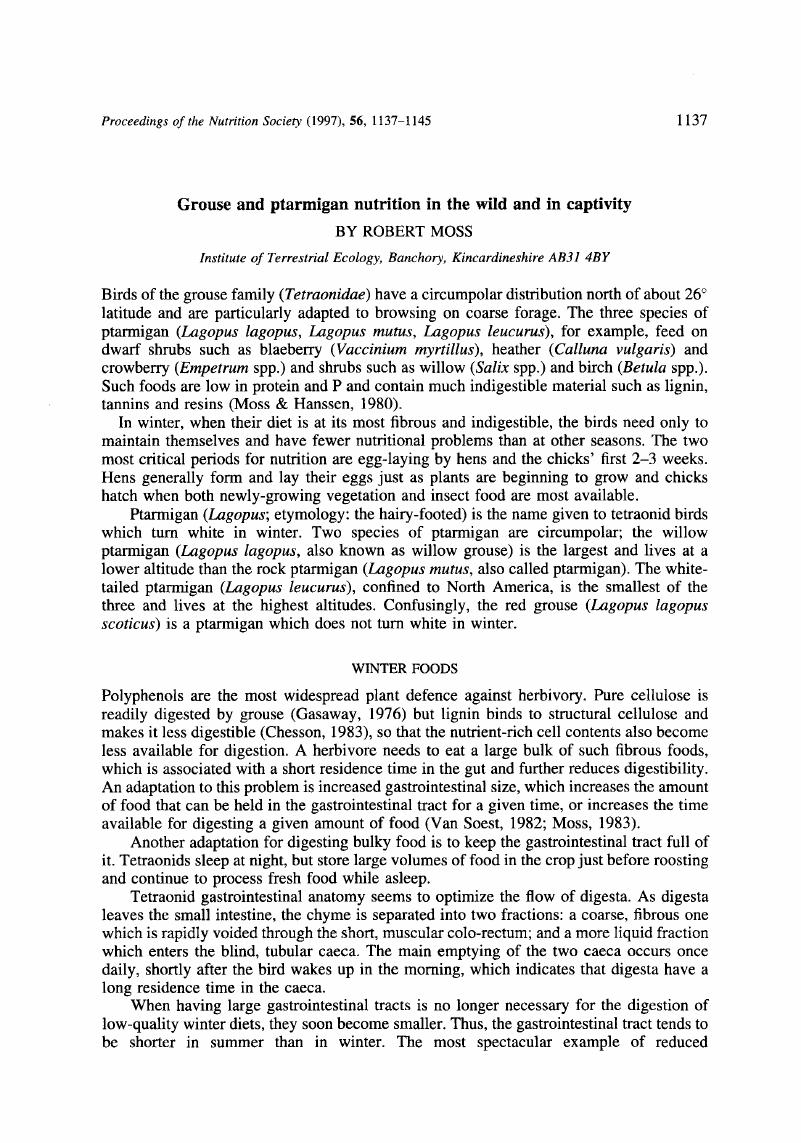Crossref Citations
This article has been cited by the following publications. This list is generated based on data provided by Crossref.
Moss, Robert
Oswald, James
and
Baines, David
2001.
Climate change and breeding success: decline of the capercaillie in Scotland.
Journal of Animal Ecology,
Vol. 70,
Issue. 1,
p.
47.
Moss, Robert
Oswald, James
and
Baines, David
2001.
Climate change and breeding success: decline of the capercaillie in Scotland.
Journal of Animal Ecology,
Vol. 70,
Issue. 1,
p.
47.
Wang, Jie
Fang, Yun
Klaus, Siegfried
and
Sun, Yue-Hua
2012.
Winter foraging strategy of the Chinese Grouse (Bonasa sewerzowi): ecological and physiological factors.
Journal of Ornithology,
Vol. 153,
Issue. 2,
p.
257.
Blomberg, Erik J.
Poulson, Simon R.
Sedinger, James S.
and
Gibson, Daniel
2013.
Prefledging diet is correlated with individual growth in Greater Sage-Grouse (Centrocercus urophasianus).
The Auk,
Vol. 130,
Issue. 4,
p.
715.
Blomberg, Erik J.
Sedinger, James S.
Gibson, Daniel
Coates, Peter S.
and
Casazza, Michael L.
2014.
Carryover effects and climatic conditions influence the postfledging survival of greater sage‐grouse.
Ecology and Evolution,
Vol. 4,
Issue. 23,
p.
4488.
García-González, Ricardo
Aldezabal, Arantza
Laskurain, Nere Amaia
Margalida, Antoni
Novoa, Claude
and
Lutermann, Heike
2016.
Factors Affecting Diet Variation in the Pyrenean Rock Ptarmigan (Lagopus muta pyrenaica): Conservation Implications.
PLOS ONE,
Vol. 11,
Issue. 2,
p.
e0148614.
Nopp-Mayr, U.
Zohmann-Neuberger, M.
Tintner, J.
Kriechbaum, M.
Rosenberger, R.
Nopp, H.
Bosa, A.
and
Smidt, E.
2020.
From plants to feces: pilot applications of FTIR spectroscopy for studies on the foraging ecology of an avian herbivore.
Journal of Ornithology,
Vol. 161,
Issue. 1,
p.
203.
Spear, Shelley L.
Aldridge, Cameron L.
Wann, Gregory T.
and
Braun, Clait E.
2020.
Fine‐Scale Habitat Selection by Breeding White‐Tailed Ptarmigan in Colorado.
The Journal of Wildlife Management,
Vol. 84,
Issue. 1,
p.
172.
Coppes, Joy
Kämmerle, Jim‐Lino
Schroth, Karl‐Eugen
Braunisch, Veronika
and
Suchant, Rudi
2021.
Weather conditions explain reproductive success and advancement of the breeding season in Western Capercaillie (Tetrao urogallus).
Ibis,
Vol. 163,
Issue. 3,
p.
990.
Klemetsen, Anders
and
Smalås, Aslak
2023.
Twig selection on mountain birch Betula pubescens by winter‐feeding willow grouse Lagopus lagopus in a subarctic forest.
Wildlife Biology,
Vol. 2023,
Issue. 3,



